If you want to know about the Egyptian architecture or Indus valley civilization or components of Hindu temple, please click the link.
River valley civilizations refer to a number of ancient societies that developed along major rivers and used the fertile soil and water resources provided by these rivers to support agriculture and sustain large populations.
A civilization is a group of people living in an area who have improved their way of life over time. A civilization grows when people learn and work together as a society.

1) Why civilizations developed near the rivers?
The civilizations developed near the rivers due to reliable water source, fertile land for farming and transportation.

2) Early River Valley Civilization


i) Egyptian Civilization
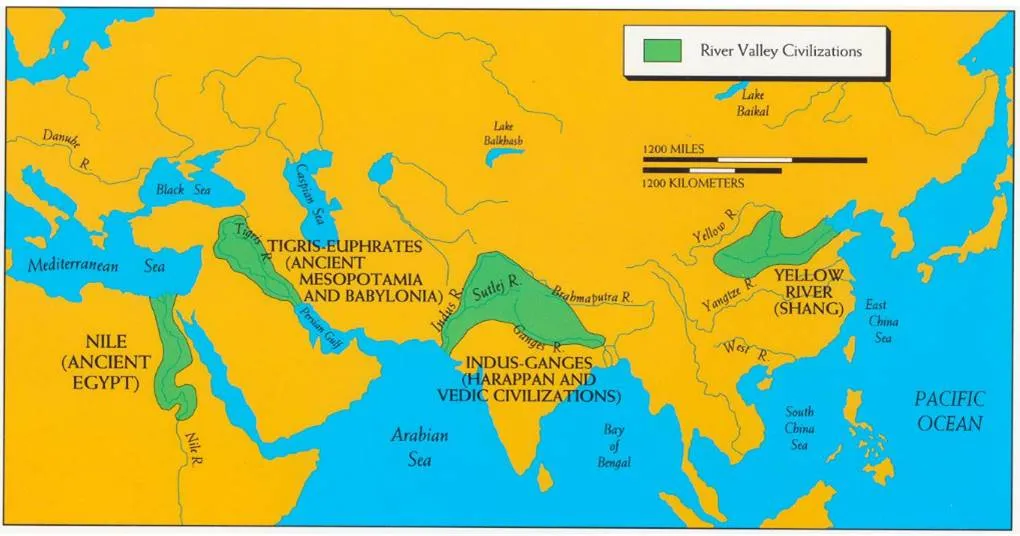
- Egyptian civilization along Nile River.
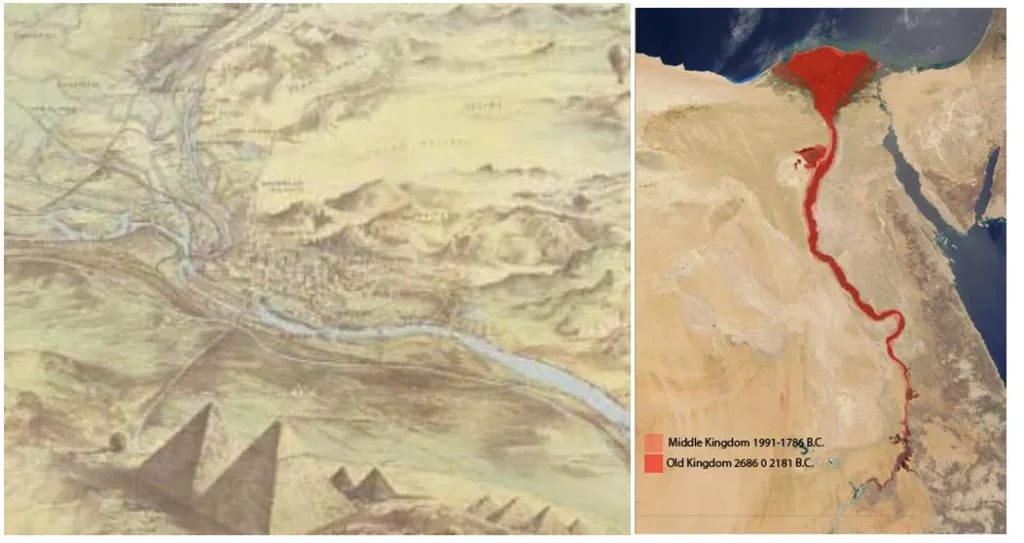
a) Geography
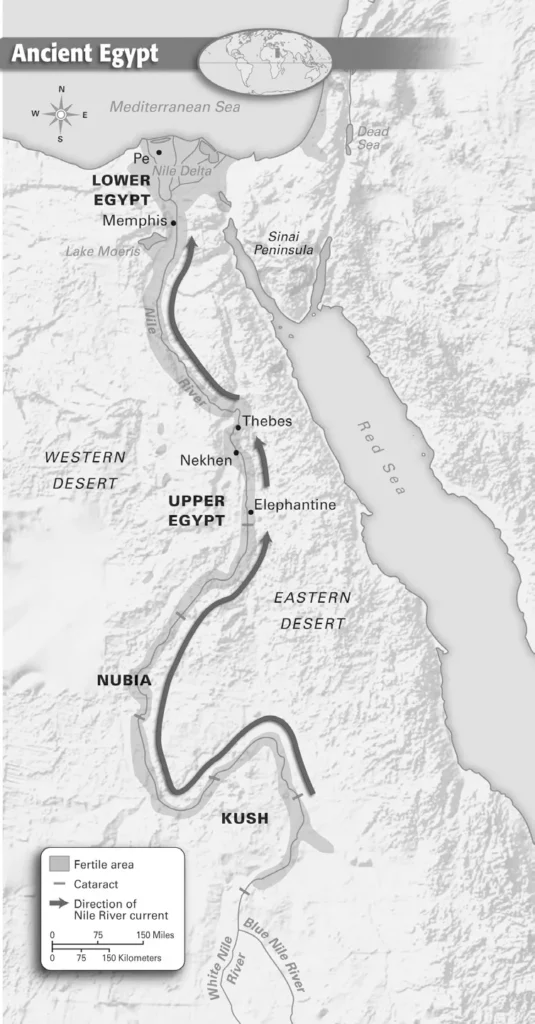
- The land of Egypt was protected by natural barriers on all sides.
- The Mediterranean Sea
- The Red Sea
- Western Desert
- Eastern Desert
- It was very hard for an out-sides to even enter Egypt.
- The Nile would flood each year starting in July and lasting until November.
- This flood would provide new, rich soil for the Egyptians and would wash away waste.
b) Architecture

- The dead were buried in monumental tombs: Pyramid, mastabas.
- The amount and quality of tomb goods and the form of the tombs themselves reflect the social status of the deceased.
c) Economy
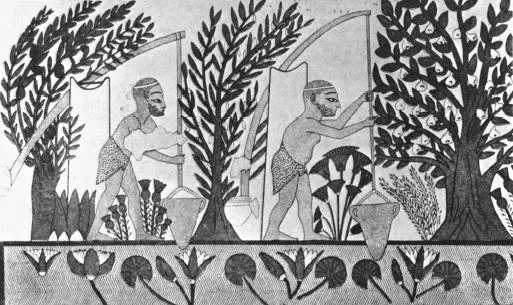
- The inhabitants of the Nile River Valley Civilization depended heavily on farming.
- Close proximity to the Nile allowed easy access to water needed for crops.
- Seasonal flooding fertilized the land for the next year’s crops.
- Agriculture was essential for survival, growth, and economic success.
c) Government

- King
- Ruler of the land.
- Female companion also had a special status
- Ruling Class
- Related or of high importance of the King.
- Craftsman
- Craftsmen make weapons and tools for the people.
- Work on the decorations for tombs.
- Farmers
- Most people of the Nile tribes were farmers that can only be vaguely distinguished by their tombs.
- Marginalized Groups
- Did not live in organized structures
- Acted as military
- Slaves
- Little evidence of slavery
- Servants were often used and sold.
- The Pyramids were built by servants who were paid in beer.
d) Religion

- Egyptians believed in life after death.
- This belief was influenced by the rise and fall of the Nile, which represented a cycle of life and death.
- Their belief in re-birth after death became their driving force behind their funeral practice’s ‘mummification’. In which priest would remove all of the organ from the deceased, dry them out with spices and salt and place them in canopic jars which had spells written on them.
- They also worshipped natural elements (Nile River, earth) and some animals that were considered sacred: crocodile, cat, beetle.
- Egyptian religion was ‘polytheistic’, that is, they believed in various gods and goddesses.
- The deities had a half human appearance and half animal.
d) Writing

- The Egyptians invented a form of writing called hieroglyphics.
- Hieroglyphs are little pictures. Some stand for an object.
ii) Chinese Civilization

Why the name of river is Yellow?

- A river valley civilization is one that develop along the water source.
- Due to large amount of soil mixes into the river making it yellow.
- It is also known as river of sorrows due to large number of deaths caused by floods.
a) Economy
- During the Shang dynasty, there was a large-scale production of bronze vessels and weapons.
- The people of this civilization used natural water from the river for irrigation until around 600 BCE.
- The increased and efficient growth of crops helped them trade and prosper. Industry and trading became important and popular during the Zhou dynasty.
- The people who made and traded silk had the most wealth and were widely respected.
b) Government
- Dynasties:
- China was ruled by dynasties, or ruling families
- Chinese emperors passed their power down to their oldest sons
- Dynasties could rule for many generations as long as they proved they had the Mandate of Heaven
c) Philosophies
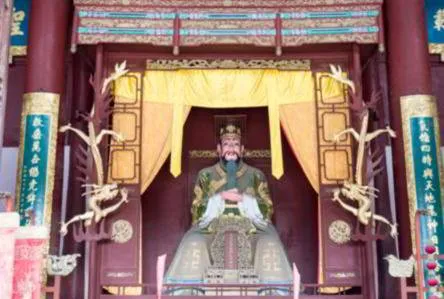
- The two main religions of the Yellow river valley civilization were Daoism and Confucianism.
- The ancient Chinese had different beliefs and customs.
- They believed that their ancestors had the ability to grant them good luck or bad luck as they were thought to be living with the Gods. They also believed in life after death.
- Therefore, the tombs were filled with those items, which the people thought the dead may need in their afterlife.
- They also believed that P’an Ku, a mythical Chinese ancestor, was born from a Cosmic Egg.
d) Art and Architecture
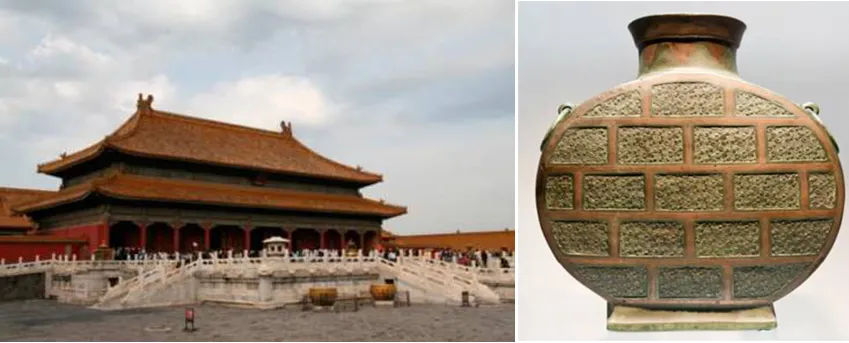
- The Chinese architecture is as old as the civilization.
- The architecture was unique with features only to be found in Chinese residencies and buildings.
- Elaborate tombs and palaces were constructed during the Shang dynasty.
- The art was classic and decorative with precise details.
- The people created beautiful paintings and art with some intricate designs and made pottery with various materials.
- They had keen interest in music too.
- Jade and bronze were their most precious metals, which were used to make jewelry, pots, weapons, and other objects.
e) Social Structure

- The Chinese followed the patriarchal system of family.
- The men had more important and prominent role to play in families as well as outside.
- They performed all the rituals while the women did all the household work.
- Although women held respectable position in the family, they were denied many rights. In families, the father was the sole decision maker.
f) Geography
- Rivers:

- The Huang He (Yellow) River was the cradle of Chinese civilization.
- It gets its yellow appearance from a yellow silt called loess.
- The Huang He floods unpredictably(no one knows when or if it will flood).
- When it does flood it can devastate homes, crops, and livestock and has ruined so many lives that its nickname is China’s Sorrow
- Isolated Civilization:
- Ancient China was isolated by mountains, deserts, and water.
- This caused China to develop a very independent and unique culture.
g) Agriculture
- The people of this region highly indulged themselves in intensive agriculture because of the fertile land due to ‘loess’ deposits along the river.
- They built an irrigation system that connected to the river so that their crops could be watered even during droughts.
- They grew crops such as wheat, millet, rice, grapes, peaches, green onions, etc., and domesticated pigs and other animals.
h) Writing
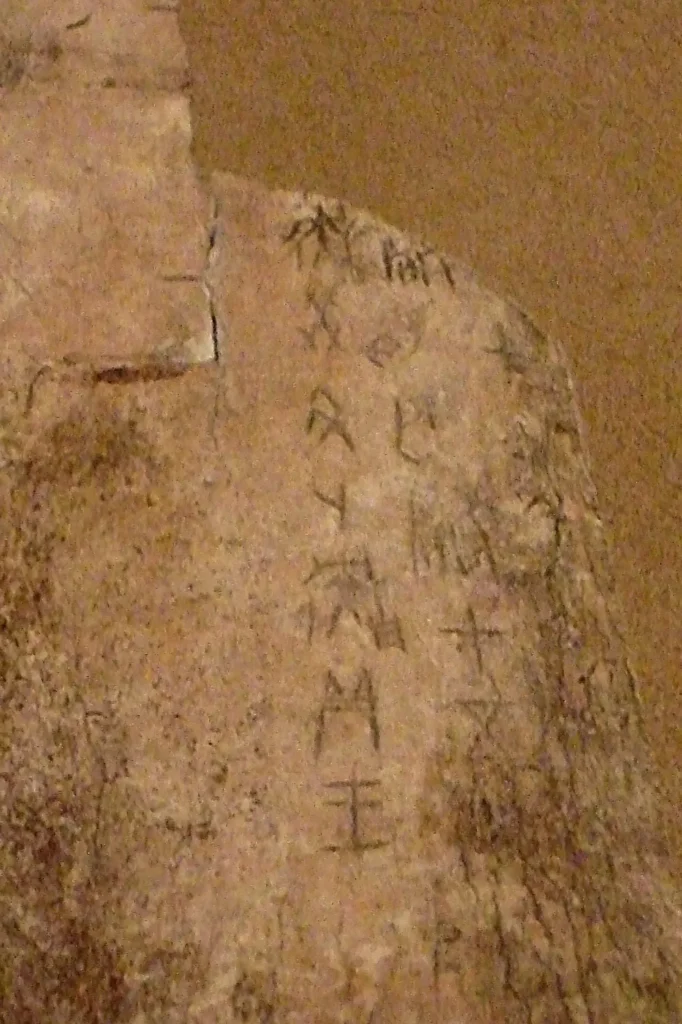
- The Chinese use a very different writing system to English.
- The Chinese use logograms – where a symbol represents a meaning or a word.
- Each character consists of a number of strokes or lines set inside an imaginary square.
i) Inventions and Technology

- The Chinese were a culturally and technologically developed society.
- They invented some items that are being used even today.
- The most important invention was the paper that was invented during the Han dynasty.
- They also invented the water wheel that was used for grinding the grains.
- They developed a unique and secret method of making silk cloth from silkworms.
- They used the invention of writing to their advantage.
- Inscriptions on bronze plates and bones are an evidence that they were well-learned people.
iii) Mesopotamia Civilization
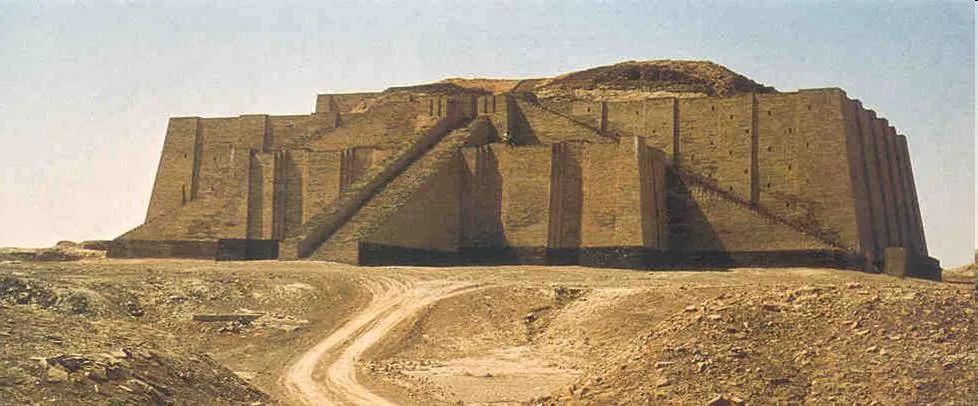

- Mesopotamia is a flat plain between the two rivers, Tigris and Euphrates in SW Asia.
- Because of this region’s shape and the richness of its soil, it is called the Fertile Crescent.

a) Geography

- Farming began in southern Mesopotamia in 5500 BC.
- It was the two rivers that became the basis upon which the wealth of the region.
- The Tigris and Euphrates rivers often flooded during the spring.
- The floods left a very fertile mud, called silt – this made the soil very rich.
- The valley between the Tigris and the Euphrates River was known as the land “between the rivers” in Greek.
- There were limited building materials like stone, wood etc.
- Ancient Mesopotamia consists of current day Assyria, Akkad, and Sumer.
- The three main independent cities in Southern Mesopotamia were Eridu, Ur, and Urak.
b) Economy

- The Sumerian city-states was based on farming and trade.
- Industry became an important factor in civilization as well.
- The people of Mesopotamia were known for their metalwork, woolen textiles, and pottery.
- Copper, tin, and timber were imported goods exchanged for dried fish, wool, wheat, and metal good.
- Around 3000 B.C. the invention of the wheel was created making transportation of good easier and quicker
c) Social Structure

- There were three major social groups in the Sumerian city-states.
- The groups were the nobles, commoners, and the slaves.
- The Nobles included many of the royal and religious officials.
- The Commoners worked for palace and temple domain, they also worked as farmers, merchants, and crafts people.
- More than 90 percent of the people in Mesopotamia were farmers due to the rich soil.
- The slaves worked in building buildings and also belonged to the palace officials.
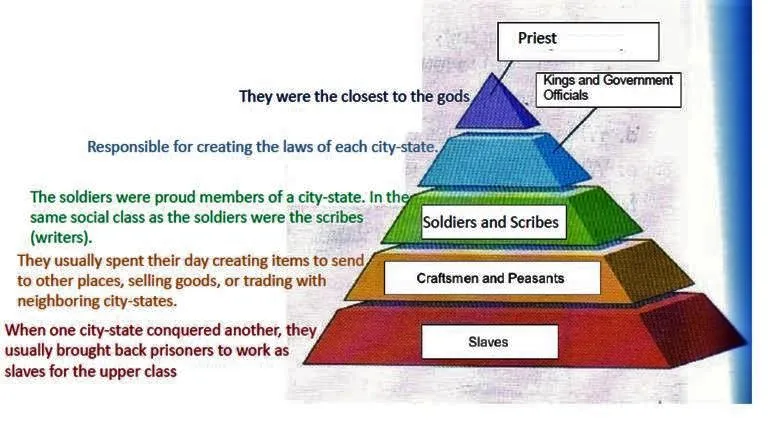
d) Politics
The political system was a Theocracy – Religious authority by divine rulers.
e) Divine Rulers
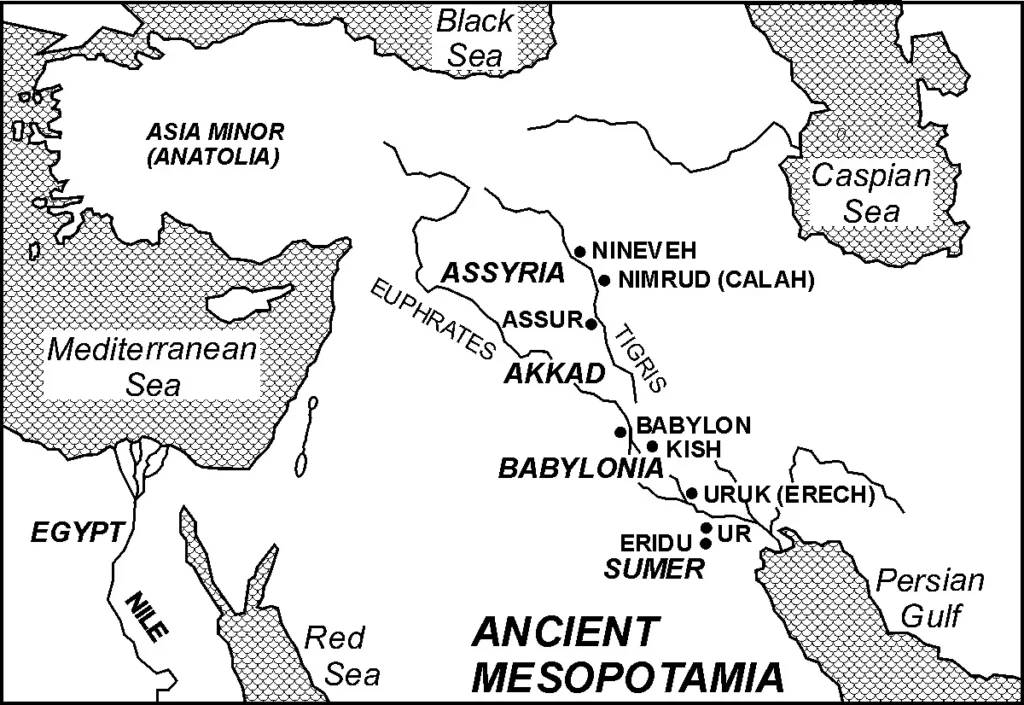
- Kings who got their power to rule from gods and therefore had god-like powers themselves; kings were aided by priests.
- There was no central government. Mesopotamia was divided into independent city-states, which often fought for control of land and water.
- Sumer- southern part
- Akkad- northern part
- Babylonia- these two regions were unified
- Assyria- Assyrian Empire
f) Art

- Mesopotamian artifacts reflected the lifestyle, customs and beliefs of the people and were usually made from stone, shells, alabaster and marble.
- The Mesopotamian civilization comprises of Sumerian, Akkadian, Assyrian and Babylonian cultural influences and the art reflects this.
g) Architecture
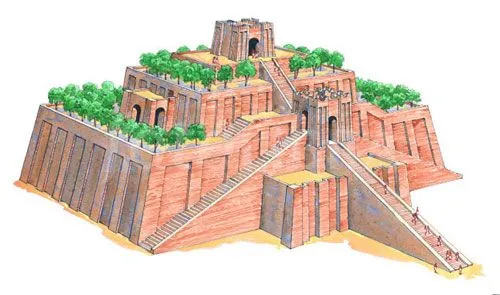
- The most famous and important building in the Sumerian city was the temple dedicated to the gods and goddesses of the city.
- Palaces served as socio-economic institutions and in later times were used as storehouses, workshops and shrines.
- The temple was called a ziggurat and was built atop a massive-stepped tower.
- Housing were built by sun-dried bricks.
- A small portion of buildings were made by stone or wood.
h) Religion

- Mesopotamian religion was polytheistic, meaning there were many gods and goddesses, as well as henotheistic, meaning that certain gods are viewed superior to others.
- Every god has a priest, temple and a traditional ritual and there were hundreds of temples scattered throughout each city.
- In the latter Mesopotamian period, the people began ranking the deities in order of importance.
i) Writing

- Cuneiform – Sumerian writing
- Wedge-shaped symbols on clay tablets.
- It’s a Pictograms form of writing i.e., a picture used to symbolize a word or phrase.
iv) Indus Valley Civilization
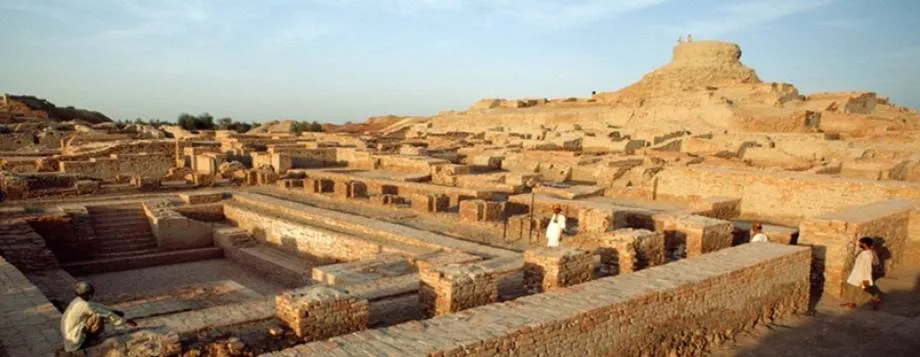
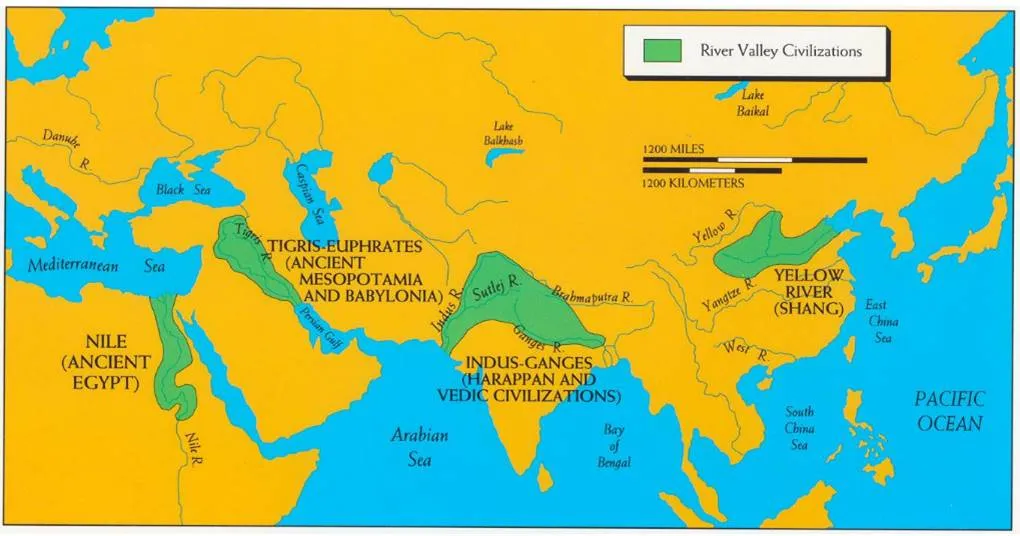
- The Indus River Valley Civilization started about 2500 B.C.E. along the south-western part of the Indus River.
- The largest city was Mohenjo-Daro, in present day Pakistan, and settlements stretched all along the river.
a) Geography
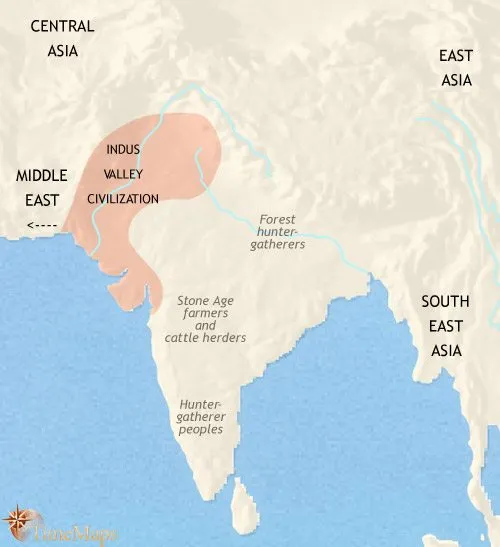
- Large Area
- Stretches across present day India, Pakistan, Bangladesh, Nepal, Sri Lanka, and Bhutan
- Surroundings
- Natural borders consisted of mountains and the Arabian Sea, sheltering the civilization from attack and disease.
- Water from the river fertilized and irrigated crops.
- Proximity to the river allowed boats to become a viable transportation option.
- Geography

- Seasonal winds known as monsoons bring rain every summer.
- This valley was dependent upon monsoons to grow their crops.
- Monsoons were unpredictable and led to famine or floods and destruction.
b) Religion

- Sun was regarded as one of the greatest gods.
- People believed in magic and superstitions also.
- No temples found.
- Terra-cotta figures found for sacrificial purposes.
- Discrete cemeteries and burial grounds .
- Human figures in yoga position with ornaments and headdresses symbolizes fertility god.
- Caste system with four main classes-
People were born into social classes that could not be changed.
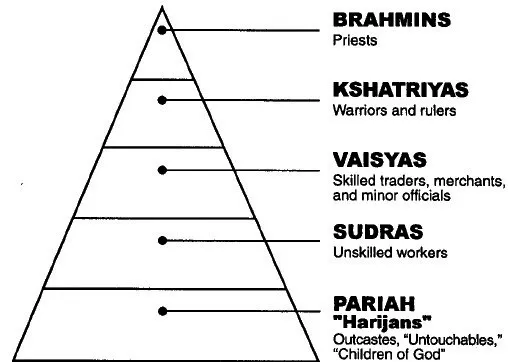
Brahmins – (priests and the king)
Kshatriyas – (warriors and aristocrats – rulers)
Vaishyas – (cultivators, artisans, and merchants)
Shudras – (peasants and serfs)
- The caste system was a major impact on the social structure within Indus River Valley civilization.
- It consisted of a variety of levels displaying social status.
c) Writing/Literature
- Vedas – Oldest Scriptures of Hinduism
- Writings on prayers
- Hymns
- Religious Rituals
- Philosophies
These civilizations are known for their significant contributions to human development, including advances in writing, religion, governance, architecture, and the arts. They also laid the foundation for the development of complex societies and the growth of early cities.